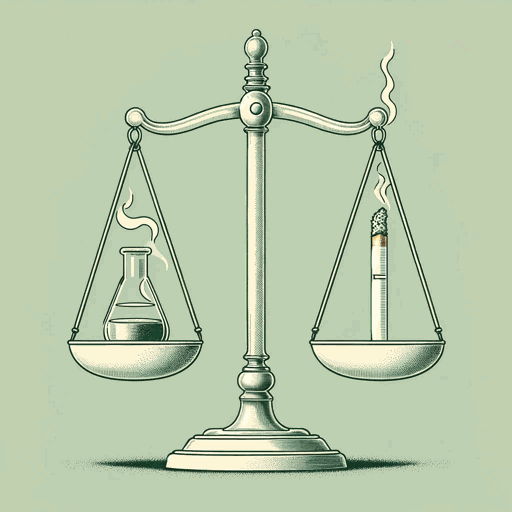54 pages • 1 hour read
Naomi OreskesThe Collapse of Western Civilization
Fiction | Novel | Adult | Published in 2014A modern alternative to SparkNotes and CliffsNotes, SuperSummary offers high-quality Study Guides with detailed chapter summaries and analysis of major themes, characters, and more.
Summary and Study Guide
Overview
The Collapse of Western Civilization: A View From the Future (2014) is a novella by Naomi Oreskes and Erik M. Conway. Both Oreskes and Conway are historians who specialize in the history of science. The text is set in the year 2300 and is written as a historical essay from the perspective of an unnamed historian living in the fictional country of the Second People’s Republic of China. The historian recaps the progression of climate change, climate change inaction and denial, and the downfall of Western civilization. Although much of the information contained in the text is factual, it is considered a work of speculative fiction. While some of the topics in the text, like its anti-neoliberalism and its criticism of science, are controversial, the novella received critical acclaim for its ability to creatively depict the potential consequences of climate change in the hopes of inspiring climate action.
This guide is based on the 2014 Columbia Press University Kindle edition, which includes an interview conducted by Patrick Fitzgerald of Columbia University.
Plot Summary
The historian reflects on the Period of the Penumbra, named for the shadow of anti-intellectualism that fell over the Western world, leading to climate change denial and subsequent climate crisis. Western civilization was aware of climate change and knew how to stop it, but they did not.
The knowledge that rising levels of atmospheric carbon dioxide would raise global temperatures and disrupt the climate was discovered in the early 1900s. Climate research and environmental organizations were funded; however, the carbon-industrial complex—or the industries that directly or indirectly supported fossil fuel use—sowed disinformation that created public disagreement and climate change denial. The consequences of climate change, such as heat waves and massive storms, became visible in the early 2000s. While many accepted the realities of climate change, the fossil fuel industries continued their climate change denial rhetoric, paralyzing humanity and resulting in the normalization of extreme weather events.
In Chapter 2, the historian addresses the historical reliance on fossil fuels and the carbon industrial complex, or the multitude of industries and organizations that contribute to the continuation of the fossil fuel industry. Scientists were verbally and legally attacked for attempting to spread climate awareness; however, certain science practices—including reductionism, specialization, and an overreliance on statistics—contributed to the prevalence of climate denial. The concept of “human adaptive optimism,” or the idea that humans can adapt to anything, is also cited as influencing climate denial. Greenhouse gas levels continued to rise as a result of climate inaction, and several tipping points were crossed that created feedback loops, exacerbating both emissions and rising temperatures. Global temperatures exceeded predictions, rising 3.9°C by the year 2042.
Several extreme weather events led to environmental degradation and crop destruction, and multiple organizations and agreements were formed to mitigate climate control. Nevertheless, it was too late, as tipping points had already been crossed. The Great Collapse, first recognized as the disintegration of Earth’s cryosphere, or surface ice system, and later incorporating the subsequent social collapse, followed. Then, during the Mass Migration, 1.5 billion people were forced from their homes, and the migration triggered a plague affecting both humans and other animals. A low-radiation solar cycle combined with the carbon-absorbing effects of a lichen manufactured and released by Akari Ishikawa slowed global warming enough for humans to regroup, but those in Africa and Australia perished.
Positivism and market fundamentalism are cited as primary drivers of climate change denial. Positivism is the idea that knowledge is achieved through observation, and it is closely related to the earlier Baconianism, which is the philosophical view that observation, experimentation, and experience result in empowering knowledge. However, the historian counters that Baconianism is illogical, as knowledge does not equate to power, as demonstrated through the knowledge of climate change and the inaction that allowed it to occur. Market fundamentalism—closely related to capitalism, the “invisible hand,” and neoliberalism—is the belief that the economic market will naturally regulate itself and that government interference is corrupt.
Market fundamentalism and neoliberalism are portrayed as illogical, exemplified through the Great Depression and the subsequent return to capitalism despite its oppressive qualities. The historian also draws attention to the irony that, by disavowing any governmental regulation, neoliberalism created the conditions that required drastic government interference and the eventual transition to neocommunism in the SPRC. Since the establishment of neo-communist China, humanity has stabilized and has begun to reverse the effects of climate change. While scholars often discuss returning to democracy, the idea is rejected, in part because the events of the Penumbra are well-known.
The text features supplemental appendices, including a fictionalized “Lexicon of Archaic Terms,” which continues the satirical tone and expounds upon certain features of the concepts discussed by the historian. An interview with Oreskes and Conway conducted by Patrick Fitzgerald provides additional insight into the authors’ motivation, choices, and purpose in writing The Collapse of Western Civilization.
Related Titles
By Naomi Oreskes


